Vincristine is a chemotherapy medication for cancer treatment, including leukemia, lymphoma, and some solid tumors. It belongs to a medication called vinca alkaloids derived from the periwinkle plant (Catharanthus roseus). Vincristine works by disrupting the process of cell division, specifically targeting the rapidly dividing cancer cells, ultimately leading to cell death.
Here is a detailed introduction to Vincristine:
1. Mechanism of action: Vincristine binds to a protein called tubulin, a crucial component of the microtubules forming the cell’s internal skeleton. Microtubules play a vital role in cell division by forming the mitotic spindle, which helps separate the chromosomes during cell division. By binding to tubulin, Vincristine prevents the formation of the mitotic spindle, halting cell division and leading to cell death. This mechanism is particularly effective against rapidly dividing cancer cells.
2. Administration: Vincristine is administered intravenously (IV) as a slow infusion into a vein. The dosage and schedule of administration depend on the type and stage of cancer, the patient’s overall health, and their response to the medication. Vincristine is often given with other chemotherapy drugs as a treatment regimen.
3. Precautions: Vincristine may interact with other medications, so it is crucial to inform the healthcare team of all medications, supplements, and herbal products being taken. Patients should also inform their healthcare team if they have a long history of liver or kidney problems, as these health conditions may affect the drug’s safety and effectiveness. Vincristine can harm an unborn baby, so pregnant or breastfeeding individuals should avoid this medication.
5. Monitoring: During treatment with Vincristine, patients will undergo regular blood tests to monitor blood cell counts, liver function, and kidney function. This helps the healthcare team assess the patient’s response to treatment and modify the dosage or schedule as needed.
In summary, Vincristine is a chemotherapy drug used to treat various types of cancer. It works by disrupting cell division, leading to cell death in rapidly dividing cancer cells. The drug is administered intravenously, and its side effects and precautions should be carefully considered and monitored by the healthcare team.
Table of Contents
- Side Effects Of Vincristine
- How To Manage The Side Effects Of Vincristine?
- Uses Of Vincristine
- Price Of Vincristine In India & Worldwide
- Precautions To Be Taken Before And After Consuming Vincristine
- Benefits Of Vincristine
- Vincristine’s Overdose Management And Treatment Options
- How Does Vincristine Work?
- Conclusion
Side Effects Of Vincristine

Vincristine is a chemotherapy medication that cures various cancer types, including leukemia, lymphoma, and solid tumors. While it is an effective drug, it can cause several side effects. The side effects of Vincristine can differ from person to person, and not everyone will encounter all of them. It is vital to note that some side effects may be temporary and resolve after treatment, while others may have long-term consequences. Here are the common side effects of Vincristine:
1. Neurological Side Effects:
– Peripheral neuropathy: This is the most common side effect of Vincristine. It causes tingling, numbness, or pain in the hands and feet. In severe cases, it may affect the ability to walk or perform delicate motor tasks.
– Constipation: Vincristine can cause constipation, which may require medication or dietary modifications.
2. Gastrointestinal Side Effects:
– Nausea and vomiting: Vincristine can cause mild to moderate nausea and vomiting. Anti-nausea medications can be prescribed to manage these symptoms.
– Abdominal pain: Some individuals may experience abdominal pain or cramping.
3. Hematological Side Effects:
– Low blood cell counts: Vincristine can temporarily reduce the growth of platelets, white blood cells, & red blood cells, causing an increased risk of infections, anemia, and bleeding tendencies.
4. Musculoskeletal Side Effects:
– Jaw pain: Some individuals may experience temporary jaw pain or difficulty with mouth opening.
5. Other Side Effects:
– Hair loss: Vincristine may cause temporary hair loss, but hair usually grows back after treatment.
– Fatigue: Cancer treatment, including Vincristine, can lead to fatigue and decreased energy levels.
– Allergic reactions: In rare cases, allergic reactions such as rash, itching, or difficulty breathing may occur.
Long-term Side Effects Of Vincristine
Long-term side effects are less common but can occur. These may include:
1. Peripheral neuropathy: In some cases, the peripheral neuropathy caused by Vincristine can persist or worsen even after treatment ends.
2. Cognitive effects: Some individuals may experience difficulties with memory, concentration, or other cognitive function.
3. Fertility issues: Vincristine may affect fertility in both males and females. It is crucial to discuss fertility preservation options with your healthcare provider before starting treatment.
4. Secondary cancers: There is a small risk of developing secondary types of cancers, such as leukemia or solid tumors, later in life due to Vincristine treatment. Regular follow-up and monitoring are essential to detect any potential long-term effects.
It is crucial to discuss any side effects you experience with your healthcare provider. They can provide guidance on managing the side effects and may adjust your treatment if necessary. Additionally, regular monitoring and follow-up appointments are essential to assess your response to treatment and detect any potential long-term effects.
How To Manage The Side Effects Of Vincristine?

Vincristine can effectively kill cancer cells and may also cause certain side effects. It is vital to note that every person may react differently to the medication, and the severity and occurrence of side effects can vary. However, here are some general strategies to help manage the side effects of Vincristine:
1. Nausea and vomiting:
– Your healthcare provider may prescribe anti-nausea medications (antiemetics) to help prevent or manage nausea and vomiting.
– It is prudent to eat small, frequent meals and avoid consuming large amounts of food at once.
– Opt for bland, easily digestible foods and avoid spicy, greasy, or strong-smelling foods that may trigger nausea.
– Drinking ginger tea or using ginger supplements may help alleviate nausea.
2. Constipation:
– Maintain good body hydration by drinking plenty of water unless otherwise instructed by your healthcare provider.
– Increase your consumption of dietary fiber by eating fruits, vegetables, whole grains, and legumes.
– Engage in doing light physical activity, like walking, to stimulate bowel movements.
– If needed, your doctor may recommend over-the-counter laxatives or stool softeners.
3. Peripheral neuropathy:
– It is a common side effect of Vincristine that affects the nerves, causing tingling, numbness, or pain in the hands and feet.
– They may adjust the dosage or schedule of Vincristine or prescribe medications to manage the neuropathic symptoms.
– Taking warm baths, topical creams or lotions, or undergoing physical therapy may help alleviate symptoms.
4. Hair loss:
– Vincristine can cause temporary hair loss. It usually grows back once treatment is completed.
– Consider using gentle hair care products and avoiding excessive heat or chemical treatments on your hair.
– Wigs, scarves, or hats can help cover hair loss and boost self-confidence.
5. Fatigue:
– Chemotherapy can cause fatigue. It is essential to prioritize rest and get plenty of sleep.
– Conserve energy by pacing yourself and delegating tasks when possible.
– Combat fatigue with light physical activity, such as short walks or gentle stretching.
– Maintain a well-balanced diet to give your body nutrients and energy.
6. Other general considerations:
– Communicate openly with your healthcare team about any side effects you experience, as they can provide specific guidance and support.
– Follow the recommended treatment schedule and dosages to ensure the best outcome.
– Stay hydrated by drinking plenty of fluids unless instructed otherwise by your healthcare provider.
– Avoid smoking, excessive alcohol consumption, and exposure to infections to reduce additional stress on your body.
– Seek psychological support from loved ones, support groups, or therapists to cope with the challenges of cancer treatment.
Remember, the management of side effects may vary from person to person. It is crucial to contact your physician for medical advice and guidance based on your specific situation. They can monitor your progress, adjust the treatment plan if necessary, and provide appropriate interventions to manage any side effects effectively.
Uses Of Vincristine
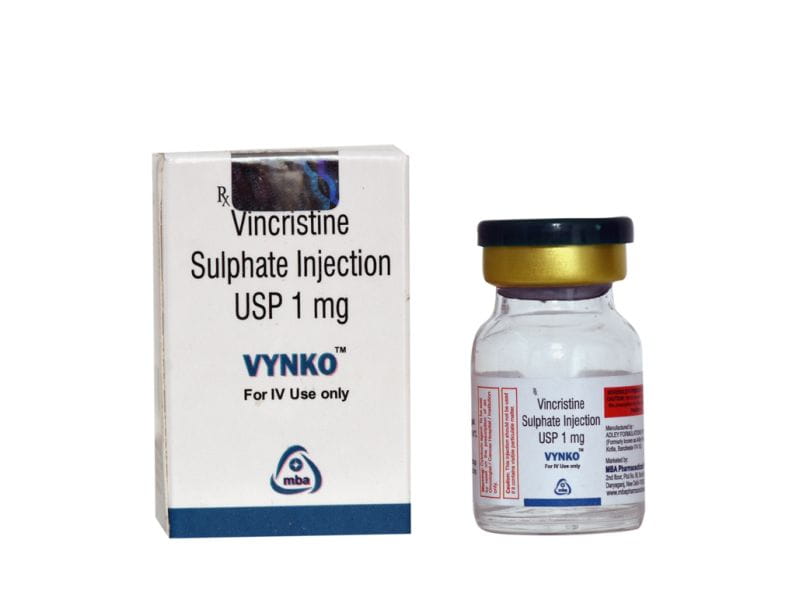
Vincristine is a chemotherapy medication that works by interfering with the growth and division of cancer cells.
Here are some of the uses of Vincristine:
1. Leukemia: Vincristine is commonly used to treat acute lymphoblastic leukemia (ALL), the most common kind of cancer in children. It is often part of a combination chemotherapy regimen and is given intravenously. Vincristine helps in destroying leukemia cells and preventing their further growth.
2. Lymphomas: Vincristine is used in the treatment of both Hodgkin’s lymphoma and non-Hodgkin’s lymphoma. It may be used solely or in combination with other chemotherapy drugs. Vincristine helps shrink tumors and control cancer spread in lymph nodes and other body parts.
3. Solid Tumors: Vincristine can be used in the treatment of various solid tumors, including neuroblastoma, rhabdomyosarcoma, Wilms tumor, and Ewing sarcoma. It is often included in multi-drug chemotherapy regimens to reduce the tumor’s size and inhibit its growth.
4. Brain Tumors: Vincristine may be used in the treatment of brain tumors, such as gliomas and medulloblastomas. It is sometimes administered directly into the spinal fluid (intrathecal administration) to target cancer cells in the central nervous system.
5. Other Cancers: Vincristine may be utilized in the treatment of other kinds of cancer, like breast cancer, lung cancer, and small cell carcinoma of the bladder. However, its use in these cancers is generally limited and may be combined with other chemotherapy agents.
It is vital to know that the use of Vincristine is determined by the stage, kind, and location of the cancer tumor, as well as the overall health and specific needs of the patient. The healthcare provider determines the dosage and treatment schedule, considering various factors such as the patient’s age, weight, and tolerance to the medication.
A healthcare professional typically administers vincristine through an intravenous (IV) infusion. The drug is slowly infused into a vein over a specific period, and the frequency and duration of treatment depend on the particular cancer being treated.
It is crucial to note the benefits and risks of undergoing Vincristine treatment with your healthcare provider. They will provide personalized guidance and closely monitor your response to the medication to ensure its effectiveness and manage any possible side effects.
Price Of Vincristine In India & Worldwide

The price of Vincristine can vary depending on the country, manufacturer, and healthcare system. I will provide an overview of the costs in India and worldwide.
1. India:
In India, the price of Vincristine can range from ₹50 to ₹500 (approximately $0.66 to $6.60) per vial, depending on the brand and the quantity purchased. Some popular brands of Vincristine available in India are Vincristine Sulfate by Cipla, Oncovin by Pfizer, and Vincristine Sulfate by Fresenius Kabi.
2. United States:
In the United States, the price of Vincristine can vary significantly based on the healthcare system and insurance coverage. The average price of a single vial of Vincristine can range from $30 to $300. However, patients with insurance may pay a lower price depending on their coverage.
3. Europe:
In European countries, the price of Vincristine can also vary depending on the healthcare system and the country. On average, the cost of a single vial of Vincristine can range from €25 to €250 (approximately $30 to $300).
Please understand that these prices are approximate and can change over time. It is essential to connect with a healthcare professional or pharmacist in your country to get the most accurate and up-to-date pricing information for Vincristine.
Precautions To Be Taken Before And After Consuming Vincristine
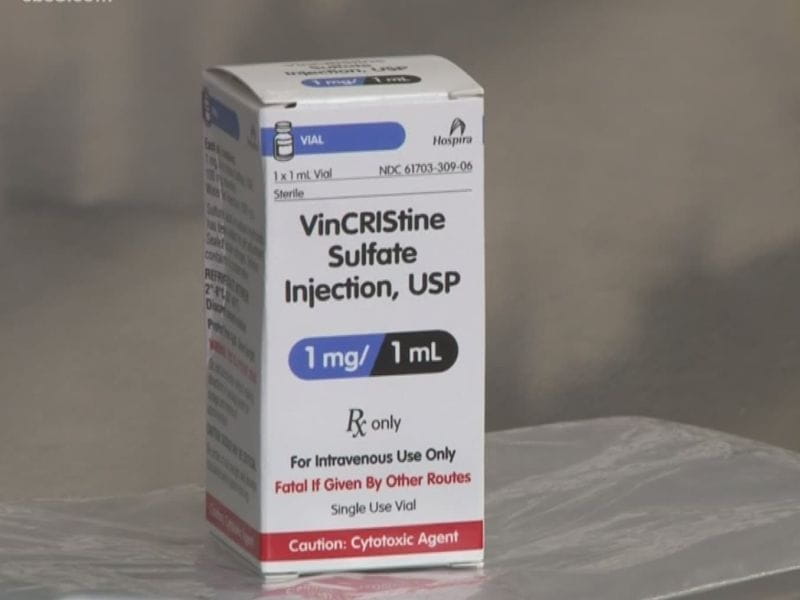
Before consuming Vincristine or any chemotherapy medication, it is crucial to follow specific precautions to ensure the safety and effectiveness of the treatment. Here are some necessary precautions to consider before and after consuming Vincristine:
Before Consuming Vincristine:
1. Medical History and Allergies: Inform your healthcare provider about your entire medical history, like any previous allergies or adverse reactions to medications. This information will help determine if Vincristine is suitable for you or if any alternative treatments need to be considered.
2. Medications and Supplements: Provide a list of all the medications, including over-the-counter drugs, herbal supplements, and vitamins, that you are currently taking. Some medicines and supplements may interact with Vincristine, affecting its efficacy or increasing the risk of side effects.
3. Pregnancy and Breastfeeding: Inform your healthcare provider if you are pregnant, preparing to become pregnant, or breastfeeding. Vincristine may have harmful effects on the developing fetus, and breastfeeding should generally be avoided during chemotherapy treatment. Your doctor can guide you on appropriate measures to take in such situations.
4. Fertility Considerations: Vincristine may impact fertility in both men and women. If fertility preservation is a concern, discuss options with your healthcare provider before starting treatment.
5. Blood Tests: Before starting Vincristine, your doctor may order blood tests to assess your blood cell counts and overall health. This helps ensure your body can tolerate the treatment and identify potential contraindications.
After Consuming Vincristine:
1. Follow Treatment Schedule: Adhere to the prescribed treatment schedule provided by your healthcare provider. Missing or delaying doses may affect the effectiveness of the treatment.
2. Monitor for Side Effects: Pay close attention to any side effects that may arise during or after treatment with Vincristine. Common side effects include nausea, vomiting, constipation, peripheral neuropathy, hair loss, and fatigue. Consult your healthcare provider if you experience severe or persistent side effects.
3. Hydration: Maintain good hydration by drinking plenty of fluids unless otherwise advised by your healthcare provider. Staying hydrated helps support your overall well-being and minimize certain side effects, such as constipation.
4. Infection Prevention: Chemotherapy can weaken the immune system, making you more susceptible to infections. Take precautions to minimize the risk of infections, such as practicing good hand hygiene, avoiding close contact with sick individuals, and staying away from crowded places.
5. Follow-up Appointments: Attend all scheduled follow-up appointments with your healthcare provider. These visits are important for monitoring your response to treatment, assessing any side effects, and making necessary adjustments to your treatment plan.
6. Emotional Support: Coping with cancer treatment can be emotionally challenging. Seek support from loved ones, support groups, or therapists to help you navigate through the emotional aspects of your journey.
It is essential to remember that these precautions may vary depending on your specific medical condition and treatment plan. Always consult your healthcare provider for personalized advice and guidance tailored to your needs. They will provide detailed instructions and recommendations to ensure safety and optimize treatment outcomes.
Benefits Of Vincristine
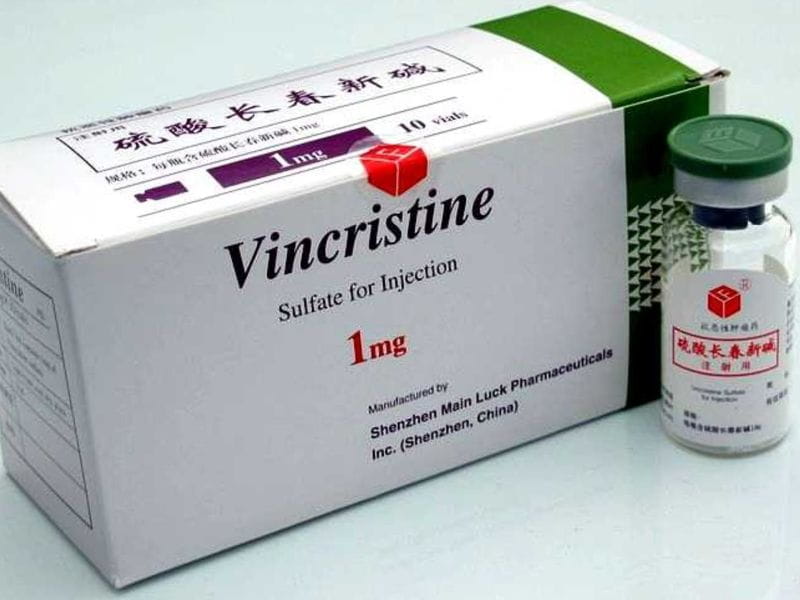
Vincristine is a medication that belongs to a class of drugs known as vinca alkaloids. It is primarily used as a chemotherapy agent in treating various types of cancer, including leukemia, lymphoma, neuroblastoma, and Wilms tumor. Here are the details about the few benefits of Vincristine:
1. Anticancer Activity: Vincristine is highly effective in restricting the growth and spread of cancer cells. It works by intervening with developing microtubules essential for cell division. By disrupting this process, Vincristine prevents cancer cells from dividing and multiplying, leading to their eventual death.
2. Broad Spectrum of Action: Vincristine has shown effectiveness against various cancers. It is commonly used in treating acute lymphoblastic leukemia (ALL), where it is an integral part of combination chemotherapy regimens. It also treats Hodgkin’s lymphoma, non-Hodgkin’s lymphoma, neuroblastoma, rhabdomyosarcoma, and other solid tumors.
3. Combination Therapy: Vincristine is often used in combination with other chemotherapy drugs to enhance its effectiveness. When used together with other medications, Vincristine can exert a synergistic effect, leading to improved outcomes and higher response rates. Combination therapy is especially beneficial in treating certain types of cancer more resistant to single-drug treatments.
4. Minimal Bone Marrow Suppression: One advantage of Vincristine compared to other chemotherapy agents is its relatively low risk of causing bone marrow suppression. Bone marrow suppression can decrease blood cell production, resulting in anemia, increased susceptibility to infections, and bleeding problems. Vincristine’s selective action on microtubules helps minimize this side effect.
5. Limited Hair Loss: Hair loss (alopecia) is one of the side effects of many chemotherapy drugs. However, Vincristine typically causes minimal hair loss or may even preserve the hair in some cases. This can considerably improve the quality of life for patients undergoing treatment, as hair loss can have emotional and psychological impacts.
6. Outpatient Administration: Vincristine is usually administered intravenously, and the treatment can be done on an outpatient basis. This means no need for the patients to be hospitalized during the treatment. Outpatient administration allows patients to receive their chemotherapy in a more comfortable environment, reducing the overall burden associated with hospital stays.
7. High Response Rates: Vincristine has demonstrated high response rates in several types of cancer. For example, in the treatment of acute lymphoblastic leukemia (ALL), it is known to induce remission in a significant percentage of patients, contributing to improved survival rates. Similarly, in other lymphomas and solid tumors, Vincristine has shown favorable response rates, leading to disease control and improved outcomes.
Despite its benefits, Vincristine may have side effects, including peripheral neuropathy (nerve damage), constipation, muscle weakness, and gastrointestinal symptoms. Patients must be closely monitored during treatment to manage any potential side effects. Treatment decisions should always be taken after consulting the healthcare professionals who can assess the risks and benefits for individual patients.
Vincristine’s Overdose Management And Treatment Options
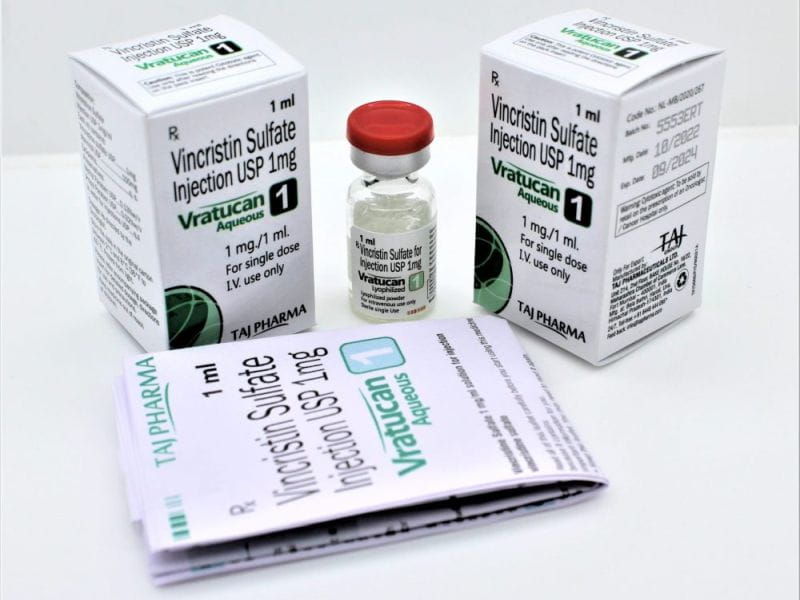
Vincristine has a narrow therapeutic index, meaning there is a small distinction between an adequate (preferable) dose and a toxic dose. An overdose of vincristine can lead to severe and potentially life-threatening complications. Vincristine overdose is a serious medical emergency that requires immediate intervention and management by healthcare professionals. The following information offers a detailed overview of the management and treatment options for vincristine overdose:
1. Prompt medical attention: If an overdose of vincristine is suspected, it is crucial to seek immediate medical assistance. Contact medical emergency services or go to the nearest emergency department. Time is of the essence to alleviate the potential complications and provide appropriate care.
2. Supportive care: Supportive measures play a vital role in the management of vincristine overdose. These may include:
– Monitoring vital signs: Continuous monitoring of the patient’s blood pressure, heart rate, respiratory rate, and oxygen saturation is essential to detect and manage cardiovascular instability or respiratory distress.
– Fluid and electrolyte management: Ensuring adequate hydration and maintaining electrolyte balance is vital for overall stability.
– Gastrointestinal decontamination: In some cases, gastric lavage (stomach pumping) or the administration of activated charcoal may be considered to prevent further absorption of vincristine. However, the effectiveness of these measures diminishes with time after ingestion and should be performed only if the patient presents soon after the overdose.
– Symptomatic treatment: Specific symptoms resulting from vincristine overdoses, such as nausea, vomiting, diarrhea, or seizures, can be managed with appropriate medications or interventions as deemed necessary by the healthcare provider.
3. Hematological support: Vincristine overdose may lead to abnormal blood cells counts, such as decreased white blood cells, red blood cells, and platelets. The healthcare provider may consider administering blood transfusions or growth factors to manage anemia, infections, or bleeding complications if significant hematological abnormalities are present.
4. Neurological management: Vincristine overdose can cause severe peripheral neuropathy (nerve damage) and central nervous system effects. The management of these complications may include:
– Symptomatic treatment: Anticonvulsants may be administered to control seizures, while antiemetics can help alleviate nausea and vomiting. Analgesics may be prescribed to manage neuropathic pain associated with peripheral neuropathy.
– Supportive measures: Physical therapy, occupational therapy, and rehabilitation services may be recommended to assist in restoring motor function and managing long-term neurological sequelae.
5. Consultation with a medical toxicologist or oncologist: In cases of vincristine overdose, it is essential to involve medical professionals with expertise in toxicology or oncology. These specialists can guide the specific management strategies based on the individual patient’s condition and response to treatment.
6. Psychological support: Overdose situations can be emotionally challenging for patients and their families. Psychological support, counseling, or referral to support groups may be beneficial to address the emotional and psychological aspects.
It is important to consider that no specific antidotes are currently available for vincristine overdose. Treatment primarily focuses on supportive measures, managing symptoms, and preventing further complications. The management plan will be based on the severity of the overdose, the patient’s condition, and the judgment of the healthcare professionals involved.
Remember, the information provided here is for general knowledge and specific management decisions should be made by healthcare professionals in a clinical setting.
How Does Vincristine Work?
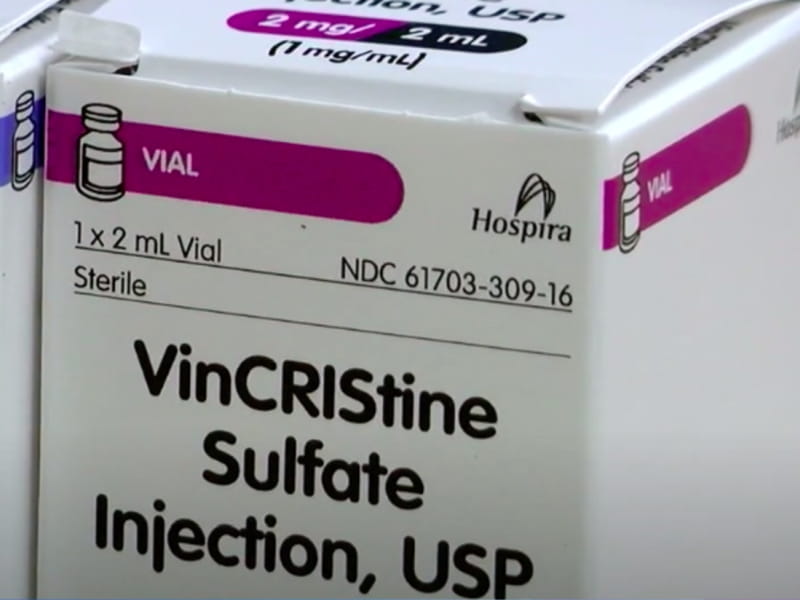
Vincristine is a medication that belongs to a class of drugs called vinca alkaloids. It works by interfering with the normal functioning of cells, particularly those undergoing cell division. Here is a detailed explanation of how Vincristine works:
1. Action mechanisms: Vincristine exerts its anti-cancer effects primarily by inhibiting the formation of microtubules in cells. Microtubules are essential components of the cell’s structural framework, and they play a crucial role in various cellular processes, including cell division, maintenance of cell shape, and intracellular transport.
2. Disruption of microtubule formation: Vincristine binds to a protein called tubulin, which is the building block of microtubules. By binding to tubulin, vincristine prevents its polymerization into microtubules, disrupting the microtubule structure.
3. Cell cycle arrest: Microtubules are critical for proper chromosome alignment and separation during cell division. By inhibiting microtubule formation, vincristine disrupts the normal progression of the cell cycle, leading to cell cycle arrest in the metaphase (M) phase. This arrest prevents the cells from dividing and proliferating.
4. Mitotic spindle disruption: The formation of the mitotic spindle, a structure necessary for separating chromosomes during cell division, is also impaired by vincristine. The drug interferes with the assembly and function of the mitotic spindle, further contributing to cell cycle arrest and inhibition of cell division.
5. Effect on cancer cells: Cancer cells, particularly rapidly dividing cells, are highly sensitive to the disruption of microtubules. Vincristine targets cancer cells that exhibit uncontrolled growth and division by selectively inhibiting their ability to divide and proliferate. This can lead to the death of cancer cells or inhibit their growth, thereby helping to control the progression of the disease.
6. Effect on normal cells: While vincristine primarily targets rapidly dividing cells, it can also affect normal, healthy cells that naturally undergo division. This can lead to some side effects associated with vincristine treatment, such as bone marrow suppression (decreased production of blood cells), gastrointestinal disturbances, and peripheral neuropathy (nerve damage).
It is vital to understand that the specific effects of vincristine may vary based on the kind of cancer being cured, the dosage, and the individual patient’s response. Vincristine is often combined with other chemotherapy drugs to enhance its effectiveness and reduce the likelihood of resistance development.
Overall, vincristine’s mechanism of action, which involves disrupting microtubule formation and interfering with cell division, makes it essential in treating various types of cancer, particularly hematologic malignancies like leukemia and lymphoma.
Conclusion

In conclusion, Vincristine has demonstrated significant effectiveness in combating cancer cells and improving patient outcomes. It is essential to stay acquainted with the potential side effects of consuming Vincristine. Vincristine’s side effects can vary in severity, ranging from mild to severe. Common side effects include hair loss, constipation, nausea, and peripheral neuropathy. It is essential for patients to communicate openly with their healthcare providers about any symptoms or concerns they experience during treatment. Healthcare professionals can provide appropriate support and interventions to manage these side effects effectively.
Despite the potential side effects, Vincristine remains a valuable treatment option for many cancer survivors. Its ability to target and disrupt cancer cells’ growth and division processes has led to successful outcomes in numerous cases. The medication has been particularly effective in treating childhood leukemia and certain types of lymphoma.
However, it is essential to note that Vincristine’s price can be a significant concern for many patients. The high cost of cancer treatments in general, including chemotherapy drugs, can place a financial burden on individuals and their families. Patients must explore available resources, such as a crowdfunding website, patient assistance programs, insurance coverage, and financial aid, to alleviate some of the financial strain associated with Vincristine treatment.
As with any medical intervention, the decision to use Vincristine should be made in consultation with a qualified healthcare professional. They can evaluate the patient’s specific condition, medical history, and treatment goals to determine the appropriateness of Vincristine and its potential benefits and risks. Ultimately, the decision to use Vincristine should be made in collaboration with healthcare professionals to ensure the best possible treatment outcomes for cancer patients.












